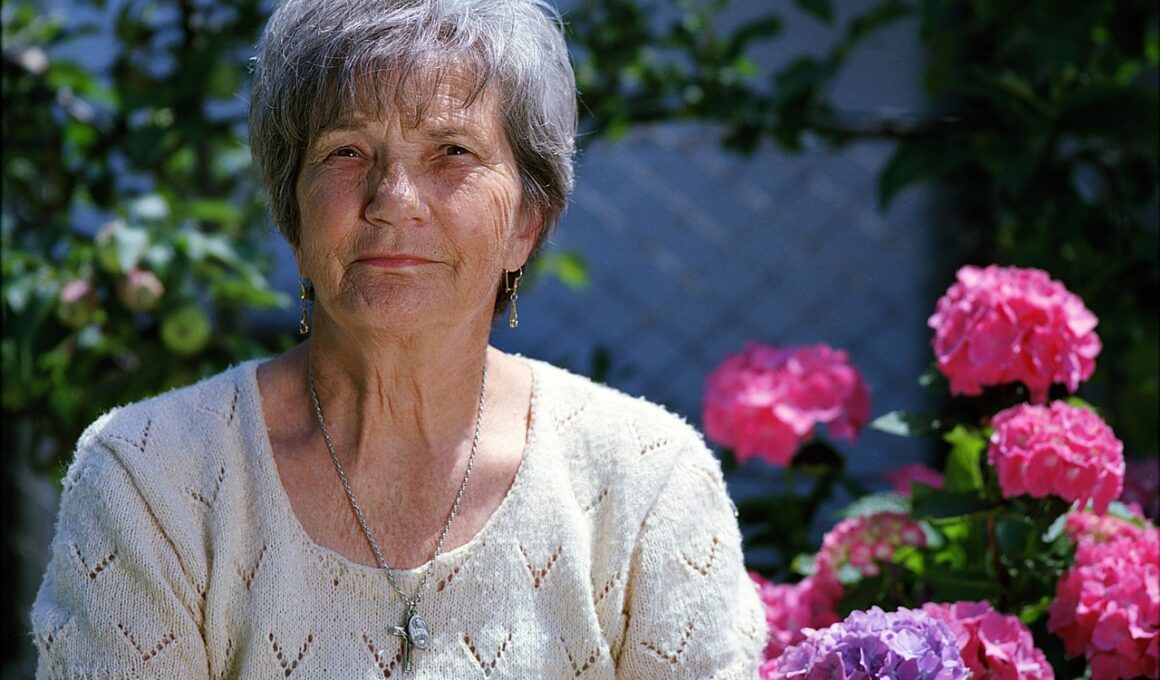Overcoming Common Challenges in Marathon Training at an Older Age
Marathon training can be a thrilling journey, especially for older adults seeking to maintain fitness and an active lifestyle. However, this age group may face unique challenges. One significant consideration is adapting recovery strategies. As we age, our bodies may require more time to heal from strenuous workouts. This necessitates modifications in training intensity and frequency. Incorporating adequate rest days and listening to body signals becomes paramount. Additionally, the importance of strength training cannot be overstated. Older adults should focus on building muscle mass and maintaining flexibility to support long-distance running. Nutrition also plays a critical role, as older runners must ensure they consume nutrient-dense foods. Staying hydrated is essential, particularly before, during, and after runs. Furthermore, older runners may grapple with past injuries or chronic conditions. Consulting healthcare providers before embarking on a training plan is advisable. Joining a supportive community, such as a local running club, can provide motivation and camaraderie. Finally, setting realistic goals tailored to individual health status fosters a positive training experience while enhancing overall enjoyment. Adjustments, persistence, and community support embody the key to successful marathon training at an older age.
As older adults engage in marathon training, mental resilience becomes equally essential as physical preparation. Cultivating a positive mindset empowers older runners to push through challenges effectively. Setting personalized training milestones creates a sense of achievement that bolsters motivation. Throughout the journey, it’s crucial to recognize and celebrate smaller victories. These may include improved endurance, consistent pacing, and successful completion of training sessions, which help maintain enthusiasm. Emphasizing mindfulness during workouts can also enhance the experience, as it allows runners to appreciate their surroundings and connect more deeply with their physical activity. Moreover, employing visualization techniques can be particularly advantageous. Imagining race success and overcoming obstacles mentally prepares individuals for actual performance during marathons. Additionally, considering potential emotional hurdles, such as fear of injury or self-doubt, is vital. Acknowledging these feelings and developing coping strategies promote a healthier outlook on training. Engaging with fellow runners, sharing experiences, and seeking encouragement can alleviate anxiety and build camaraderie in the running community. A comprehensive approach that integrates physical care, mental support, and community interaction lays the groundwork for successful marathon training among older adults.
Injury Prevention Strategies
Injury prevention is paramount in marathon training, especially for older adults. Age-related factors can increase the likelihood of injuries, making awareness and proactive strategies crucial. To mitigate injury risks, adopting a comprehensive warm-up routine is essential. This should include dynamic stretches targeting key muscle groups engaged in running. Additionally, incorporating cross-training into the training regimen offers significant benefits. Activities such as swimming, cycling, and yoga can help build overall strength and flexibility, reducing the strain on joints during runs. Selecting the appropriate footwear cannot be overlooked since well-fitted shoes provide essential support and cushioning. Regularly replacing worn-out shoes can prevent stress-related injuries. Gradual increases in mileage are also vital to avoid overtraining. Following the 10% rule, where runners increase their weekly mileage by no more than ten percent, fosters safe progression. Furthermore, paying close attention to body signals aids in preventing injuries. Any signs of discomfort should not be ignored. Consultation with healthcare professionals can guide runners in developing a personalized training plan. Finally, applying ice after training sessions helps manage inflammation and supports recovery. Healthy practices enhance longevity and enjoyment in marathon training for older adults.
Nutritional Needs for Older Runners
Nutritional needs evolve as individuals age, particularly for older adults engaged in marathon training. Proper nutrition is essential for fueling workouts and facilitating recovery. Adequate carbohydrate intake is crucial, as it provides the necessary energy for endurance training. Older runners should focus on complex carbohydrates found in whole grains, fruits, and vegetables, ensuring steady energy release during runs. Protein also plays a significant role in muscle maintenance and repair. Including lean protein sources, such as poultry, fish, legumes, and dairy, supports recovery for aging muscles. Additionally, essential fats, such as those from avocados and nuts, contribute to overall health. Omega-3 fatty acids, in particular, have anti-inflammatory properties beneficial for joint health. Hydration remains paramount, as older adults may not feel thirst as acutely, leading to dehydration. Establishing a hydration schedule before, during, and after runs can combat this issue. Furthermore, considering vitamin and mineral supplementation is beneficial, focusing on calcium and vitamin D for bone health and magnesium to support muscle function. Regularly monitoring dietary habits ensures that nutritional needs are met, promoting optimal performance and recovery throughout the marathon training journey.
Rest and recovery are often undervalued aspects of marathon training for older adults, yet they are critical for performance and long-term success. Sleep quality profoundly impacts physical recovery, and establishing a consistent sleep routine is crucial for runners. Aim for seven to nine hours of restful sleep each night, as restorative sleep helps repair muscle tissue and restore energy levels. During training periods, incorporating rest days is vital to allow the body time to heal and adapt. Active recovery, such as walking or light stretching, may be beneficial on rest days to keep muscles engaged without strain. Reducing training intensity can also allow for recovery while maintaining fitness levels. Furthermore, utilizing recovery strategies such as foam rolling and cycling can promote blood flow and reduce muscle soreness. Stretching post-workout to enhance flexibility and maintain muscle elasticity is essential. Listening to the body for fatigue signals prevents burnout and overtraining. Engaging in relaxation techniques, such as deep breathing or meditation, can ease mental stress, fostering overall well-being. Prioritizing rest ensures older adults remain motivated, injury-free, and fully prepared for the challenges that marathon training presents.
Community and Support Groups
Engaging with a supportive community greatly influences the marathon training experience for older adults. Connecting with fellow runners fosters motivation, accountability, and camaraderie, which are essential to success. Running together provides encouragement during difficult training sessions and shared joy on successful runs. Local running clubs often host group training sessions tailored for various fitness levels, accommodating older adults. Participating in these communities offers not just physical fitness but emotional connection as well. Many times, returning to running after a hiatus can feel daunting; however, support from others instills confidence. Online platforms and social media groups dedicated to older runners can also provide valuable resources. They offer a venue for sharing experiences and tips specifically addressing unique challenges faced in marathon training. Additionally, community training events and fundraisers encourage participation, promoting a sense of belonging. This ambiance can transform the marathon training journey into a fulfilling shared adventure rather than a solitary task. Older adults should leverage these opportunities, forming lasting friendships and enriching their overall running experience. Establishing connections can turn challenges into collective strengths, creating lasting memories within the marathon community.
Lastly, understanding individual limits is crucial in marathon training for older adults. Each person’s fitness level, prior running experience, and health conditions vary, influencing training outcomes. Tailoring training plans to suit individual capabilities ensures a sustainable approach to marathon preparation. Listening to one’s body displays a commitment to personal wellness. With years of experience, older runners often develop an innate sense of their body’s needs. Setting realistic goals is also a fundamental aspect of this process. Focusing on personal achievements fosters a sense of pride and motivation. Modified time or distance goals can be excellent alternatives to conventional benchmarks. Furthermore, tracking progress through running apps or journals helps maintain focus and provides insights into improvements. Should injuries or fluctuations in physical abilities arise, adapting training strategies becomes necessary. Understanding that progress may look different at various stages encourages patience and resilience. Most importantly, finding joy in running creates a fulfilling experience irrespective of personal achievements. By embracing individual journeys, older runners can enjoy marathon training and relish the benefits of an active lifestyle, cultivating a deep appreciation for the sport that surpasses conventional metrics of success.


